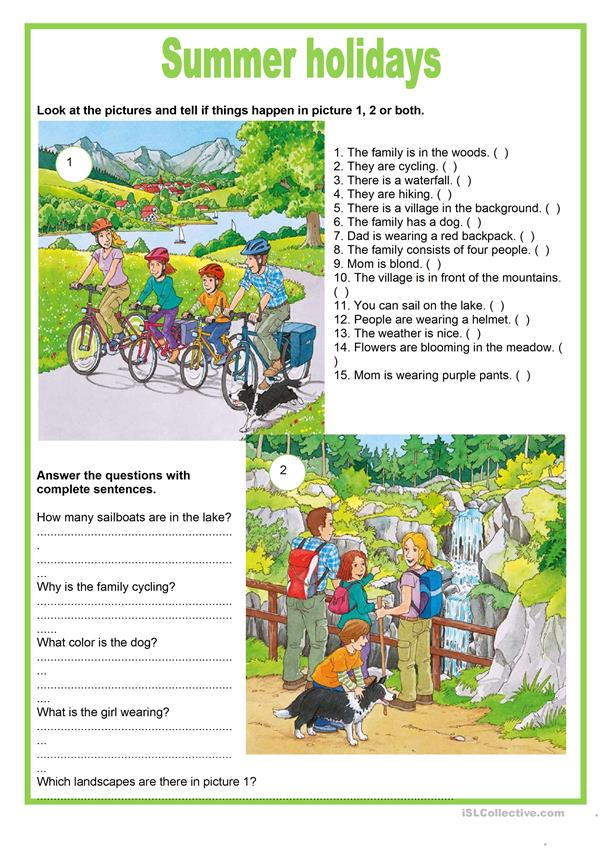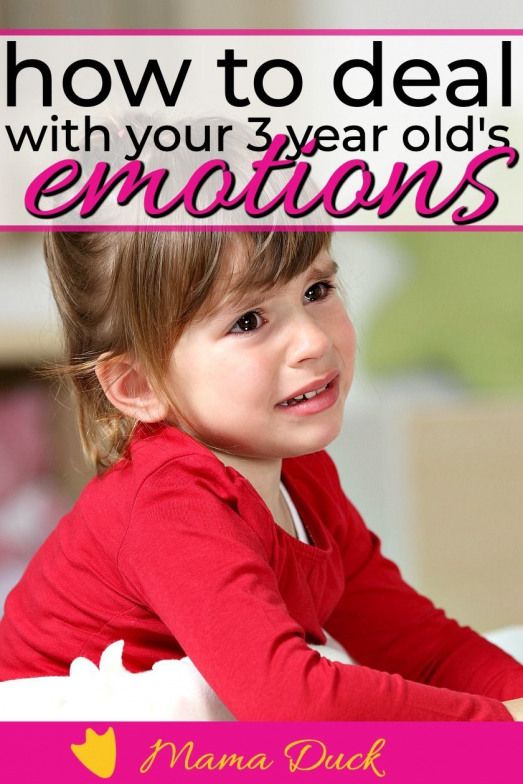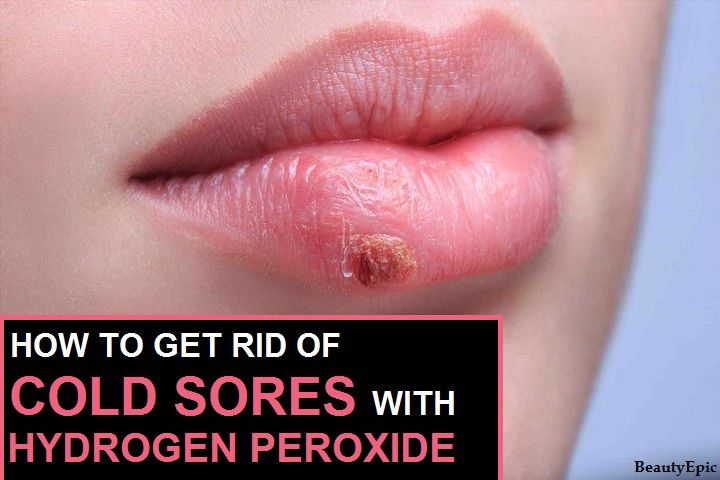Natural ways to make a baby poop
Baby Constipation: Remedies That Can Offer Relief
Just as with adults, constipation can also affect children from time to time, and rarely, babies, too. Though it’s normal for babies to sometimes have fewer bowel movements than you may expect, many parents wonder whether their baby is in fact constipated when she poops less frequently. Discover some of the telltale signs of constipation and learn how to help your baby if she’s constipated.
What Is Constipation in Babies?
To understand baby constipation, it’s important to know what stools are like for infants. Although every baby is different, and there’s a broad range of what’s considered normal when it comes to pooping, many babies will poop after each feeding in the first weeks of life.
Then, after about 3 to 6 weeks of age, some breastfed babies will poop less often, even as little as once a week. That's because breast milk creates almost no solid waste that has to be eliminated from the digestive system. Formula-fed babies tend to poop once a day or once every other day.
In terms of consistency, your baby’s stools should be soft, like peanut butter, when everything is normal and regular. Your baby may be constipated if she experiences hard, dry bowel movements, which can be difficult or even painful to pass. And, if your baby’s constipated, her bowel movements may be more infrequent than what’s typical or normal for your baby.
What Are the Signs and Symptoms of Infant Constipation?
The following signs may indicate your baby is constipated:
Your baby has hard bowel movements that look like round, ball-shaped pellets
Your baby may arch her back or cry when having difficulty passing a bowel movement. Keep in mind that it’s common for infants to strain when pooping—after all your baby will most likely be pooping while lying on her back, which isn’t that easy to do.
 If your baby passes a soft bowel movement after straining, she is probably not constipated
If your baby passes a soft bowel movement after straining, she is probably not constipated
Your baby's bowel movements are happening less frequently than normal.
How Can You Tell if Your Baby Is Constipated?
If you suspect your baby may be constipated, ask yourself the following questions:
Is she more fussy than usual?
Is she spitting up more often?
Is she having significantly fewer bowel movements than at other times?
Are her stools harder than usual, and/or are they bloody?
Does she strain for longer than 10 minutes when she needs to poop but still not pass anything?
If you answered “yes” to any of these, your little one may be constipated.
What Can Cause Infant Constipation?
Constipation is rare in young babies, particularly in those who are not yet eating solid foods. It’s more likely to occur in your baby once you introduce solids. Your baby’s pattern of bowel movements will vary depending on his age and what he’s eaten recently.
In very rare cases, your baby’s constipation may be caused by an underlying condition, such as Hirschsprung's disease, hypothyroidism, or cystic fibrosis. Contact his healthcare provider if you think your baby has constipation due to of any of these conditions, or if you have any questions about your baby's symptoms.
It’s more likely to occur in your baby once you introduce solids. Your baby’s pattern of bowel movements will vary depending on his age and what he’s eaten recently.
In very rare cases, your baby’s constipation may be caused by an underlying condition, such as Hirschsprung's disease, hypothyroidism, or cystic fibrosis. Contact his healthcare provider if you think your baby has constipation due to of any of these conditions, or if you have any questions about your baby's symptoms.
How Long Can Your Baby Go Without Pooping?
The frequency of your baby’s bowel movements can vary from day to day, and every baby is different. A baby who is consuming formula tends to poop at least once per day, but it’s possible for her not to poop for a day or two without necessarily being constipated.
In the early weeks, breastfed babies may poop more often since breast milk is easily digested, but at around 3 to 6 weeks old breastfed babies may start having fewer bowel movements, with as little as one or two per week, but still not be constipated.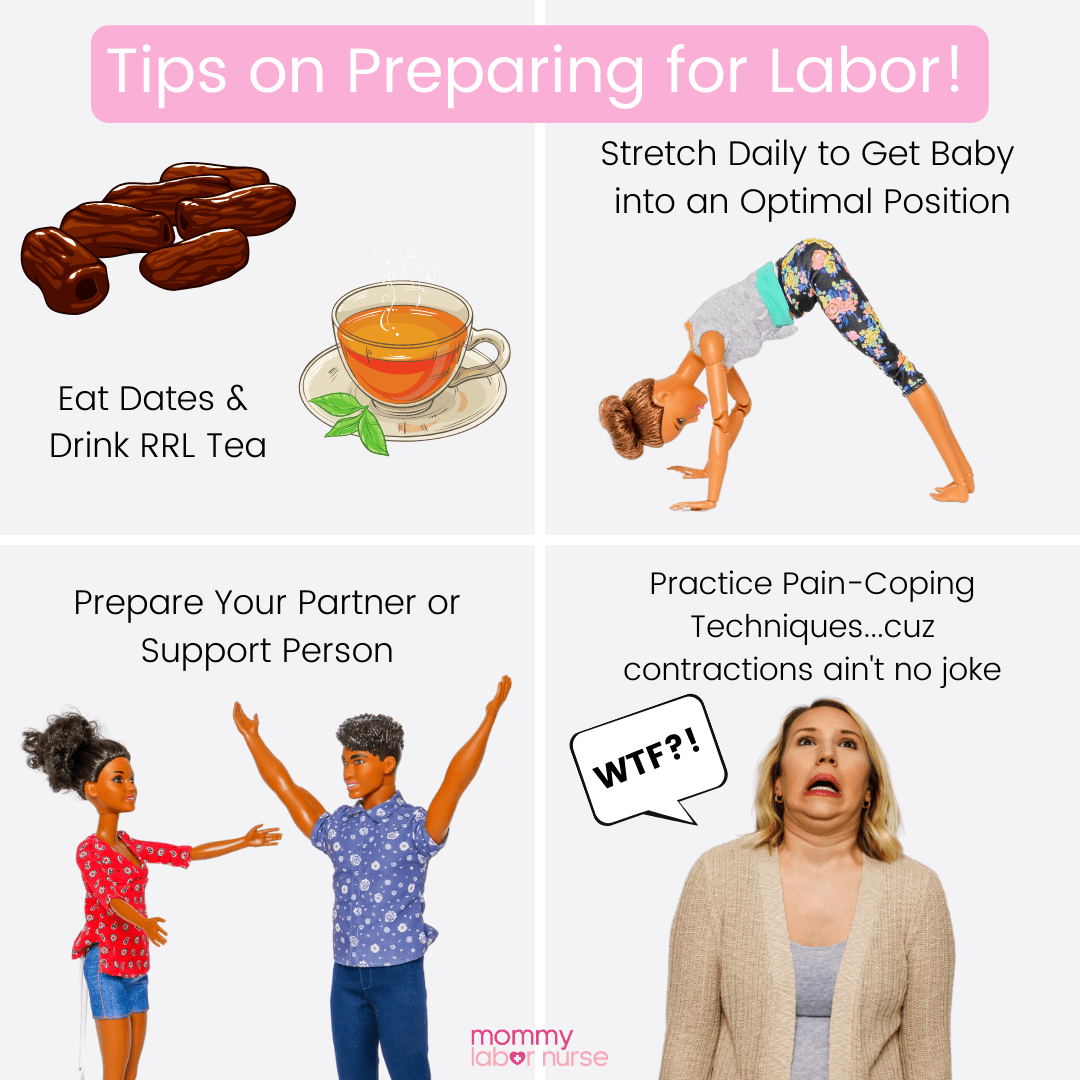
What Are Some Home Remedies for Baby Constipation?
If your baby becomes constipated once he’s started on solid foods, check in with your healthcare provider, who may recommend any of the following changes or additions to his diet to help relieve constipation:
Water. If your baby is over 6 months old (the age from when it’s OK for him to drink water), offer him a little water in a sippy cup with his meals. This shouldn’t replace breast milk or formula, however.
Fruit juice. A few ounces of 100 percent fruit juice such as apple, pear, or prune juice can also help your baby. These juices contain sorbitol, which works like a natural laxative.
Certain fruits and vegetables. Once your baby is eating solid foods, give him pureed foods such as prunes, pears, peaches, and peas. These can help with constipation since they contain more fiber than other fruits and vegetables.
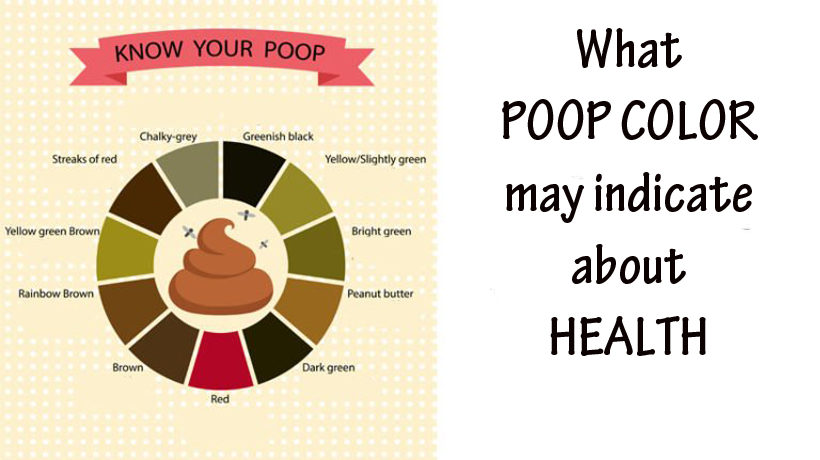
Infant cereals. Try feeding him whole-wheat, barley, or multigrain infant cereal once he is eating solid foods. These three types contain more fiber than rice cereal and may help get things moving.
If the above dietary changes haven’t given your baby relief, contact his healthcare provider again for guidance.
What Can You Give Your Baby for Constipation?
If changes in your baby’s diet haven’t given him relief from constipation, your baby’s healthcare provider might recommend an infant glycerin suppository, which is placed in your baby’s rectum. These types of suppositories are meant to be used only occasionally, and shouldn’t be overused. Do not use mineral oil, enemas, constipation medicine, or any stimulating laxatives to treat your baby’s constipation. Always follow your healthcare provider’s advice.
When Should You Contact Your Baby’s Healthcare Provider?
You may be asking yourself “When should I worry about my baby’s constipation?” There are certain signs and symptoms to look out for that can indicate more urgent medical care may be required.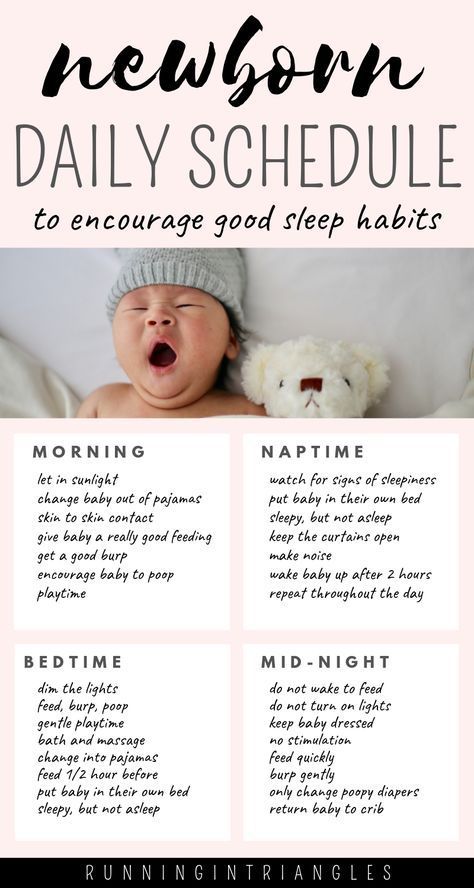 If you notice the following, contact your baby’s healthcare provider right away so your little one can get checked out:
If you notice the following, contact your baby’s healthcare provider right away so your little one can get checked out:
Vomiting
Fever
Tiredness or weakness
Loss of appetite
A swollen belly
Blood in your baby’s poop.
The Bottom Line
Constipation is more likely to happen after your baby starts eating solid foods for the first time at around 6 months of age). It takes time to adjust to new foods and this can lead to constipation from time to time.
Otherwise, constipation in babies is fairly uncommon, so it could just be that your baby is going a few days without a bowel movement and isn’t actually constipated. Knowing what symptoms to look out for, such as pellet-like poop, can be of great help in determining what the situation is.
Although constipation can be uncomfortable for your baby, especially when she’s straining to poop, a simple treatment may do the trick.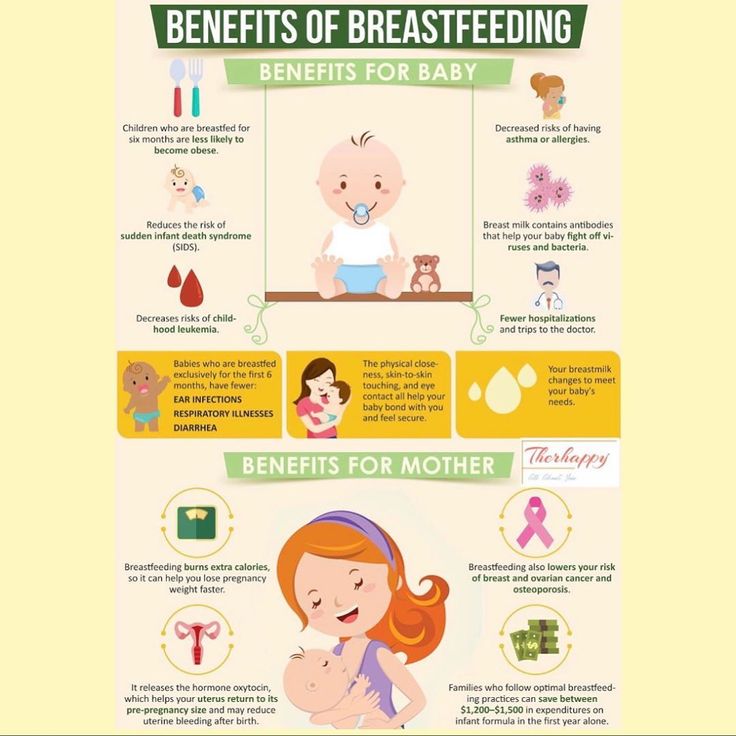 Subtle changes in diet can help relieve constipation, like adding fiber-rich foods or offering a little water. If these dietary changes don’t help, contact your baby’s healthcare provider, who may recommend the use of suppositories or another form of treatment.
Subtle changes in diet can help relieve constipation, like adding fiber-rich foods or offering a little water. If these dietary changes don’t help, contact your baby’s healthcare provider, who may recommend the use of suppositories or another form of treatment.
Baby constipation: Top 7 home remedies
Babies often go a long time between bowel movements. Most of the time, it is normal for a baby to go days or even more than a week without a bowel movement. However, a baby may sometimes be constipated and need a little help.
If a baby is constipated, a pediatrician may recommend using home remedies as a first-line treatment for baby constipation.
Home remedies for constipation in a baby include:
1. Exercise
Moving a baby’s legs can help relieve constipation.
As with adults, exercise and movement tend to stimulate a baby’s bowels.
However, as babies may not be walking or even crawling yet, a parent or caregiver may want to help them exercise to relieve constipation.
The parent or caregiver can gently move the baby’s legs while they are lying on their back to mimic the motion of riding a bicycle. Doing this may help the bowels function and relieve constipation.
2. A warm bath
Giving a baby a warm bath can relax their abdominal muscles and help them stop straining. It can also relieve some of the discomfort relating to constipation.
3. Dietary changes
Certain dietary changes may help constipation, but these will vary depending on the baby’s age and diet.
While breastfeeding a baby, a woman could eliminate certain foods, such as dairy, from her diet. It may take some trial and error to identify the dietary changes that help, and it is quite possible that changes in the diet will have no effect on the baby’s constipation.
For formula-fed babies, a parent or caregiver may want to try a different kind of formula. It is best not to switch to a gentle or dairy-free formula without consulting a pediatrician first.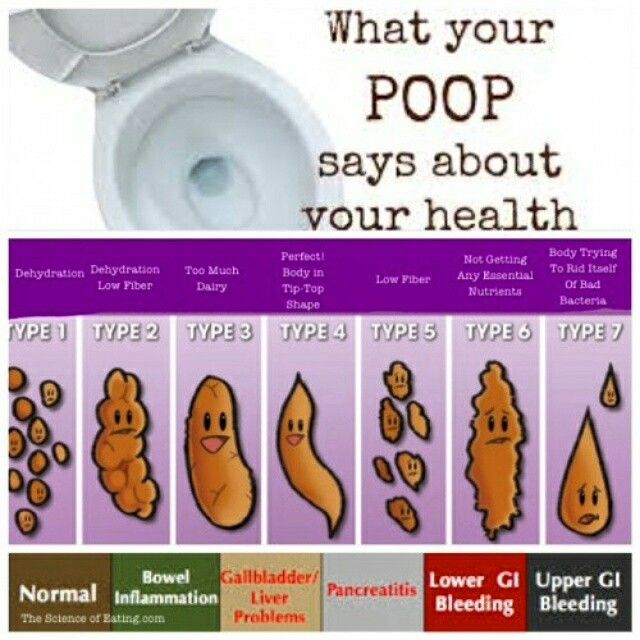 If one change does not make a difference, continuing to try different formulas is unlikely to help.
If one change does not make a difference, continuing to try different formulas is unlikely to help.
If an infant is eating solid foods, parents or caregivers should look to introduce foods that are good sources of fiber.
Many fruits and vegetables can help stimulate the bowels because of their higher fiber content. Good food choices for babies with constipation include:
- skinless apples
- broccoli
- whole grains, such as oatmeal or whole-grain bread or pasta
- peaches
- pears
- plums
4. Hydration
Young infants do not typically need supplemental liquids as they get their hydration from breast milk or formula.
However, babies that are constipated may benefit from a small amount of extra liquid.
Pediatricians sometimes recommend adding a small amount of water or, occasionally, fruit juice, to the baby’s diet when they are over 2–4 months old and are constipated.
5. Massage
There are several ways to massage a baby’s stomach to relieve constipation.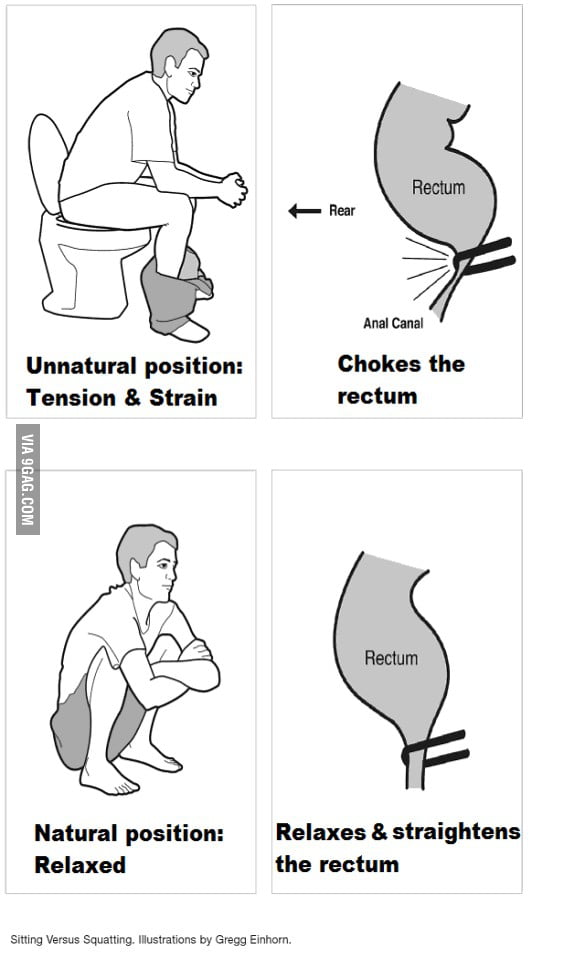 These include:
These include:
- Using the fingertip to make circular motions on the stomach in a clockwise pattern.
- Walking the fingers around the naval in a clockwise pattern.
- Holding the baby’s knees and feet together and gently pushing the feet toward the belly.
- Stroking from the rib cage down past the belly button with the edge of a finger.
6. Fruit juice
A small amount of pure apple juice can help soften stool.
After a baby reaches 2–4 months of age, they can have a small amount of fruit juice, such as 100-percent prune or apple juice. This juice may help treat constipation.
Experts may recommend starting with about 2–4 ounces of fruit juice. The sugar in the juice is hard to digest. As a result, more liquid enters the intestines, which helps soften and break up the stool.
However, a parent or caregiver should not give fruit juice to a baby for the first time without consulting their pediatrician.
7. Taking a rectal temperature
When a baby is constipated, taking the baby’s rectal temperature with a clean, lubricated thermometer may help them pass stool.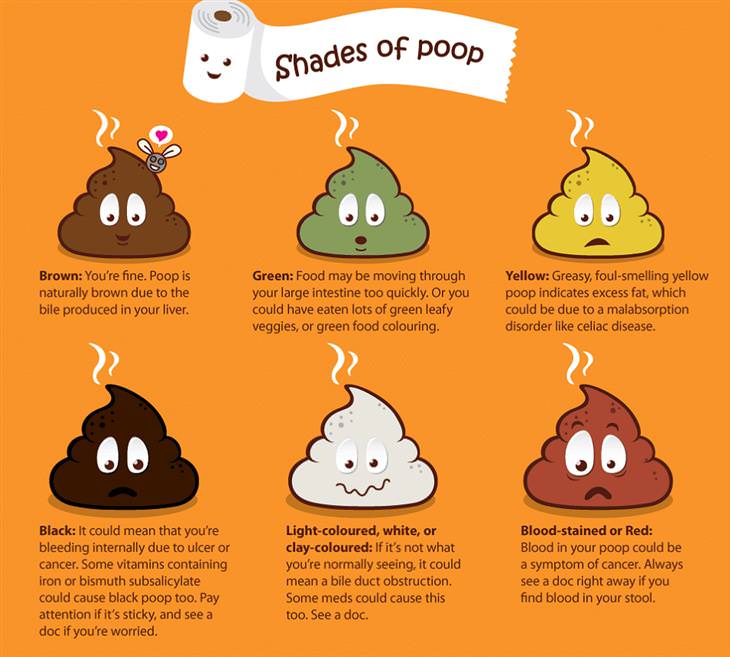
It is important not to use this method very often, as it can make constipation worse. The baby may start not wanting to pass a bowel movement without help, or they may begin to associate having a bowel movement with discomfort, leading them to fuss or cry more during the process.
Anyone who feels as though they often need to use this method to help the baby have a bowel movement should talk to the baby’s doctor.
As infants may go for extended periods without a bowel movement, it can be hard to tell if they are constipated. Signs that indicate constipation in a baby include:
- infrequent stools that are not soft in consistency
- clay-like stool consistency
- hard pellets of stool
- long periods of straining or crying while trying to have a bowel movement
- streaks of red blood in the stool
- lack of appetite
- a hard belly
Signs of constipation in babies vary depending on their age and diet. A normal bowel movement before a baby begins eating solid food should be very soft, almost like the consistency of peanut butter or even looser.
Hard baby stool prior to solid food is the most obvious indication of constipation in babies.
At first, breastfed babies may pass stool often since breast milk is easy to digest. However, once a baby is between 3 and 6 weeks old, they may only pass a large, soft stool once a week and sometimes even less.
Formula-fed babies tend to pass stool more frequently than breastfed babies. Most formula-fed babies will have a bowel movement at least once a day or every other day. However, some formula-fed babies may go longer between bowel movements without being constipated.
Once a parent introduces solid food to a baby’s diet, a baby may be more likely to experience constipation. A baby may also be more likely to become constipated if a parent or caregiver introduces cow’s milk (other than formula) to their diet.
Share on PinterestA doctor should assess a baby with ongoing constipation.
It is advisable to call a pediatrician if a baby has not passed a stool after a day or two and there are other signs present, such as:
- blood in the stool
- the baby seems to be irritable
- the baby appears to have abdominal pain
- there is no improvement in the baby’s constipation after taking steps to treat it
Treatment typically starts with home remedies.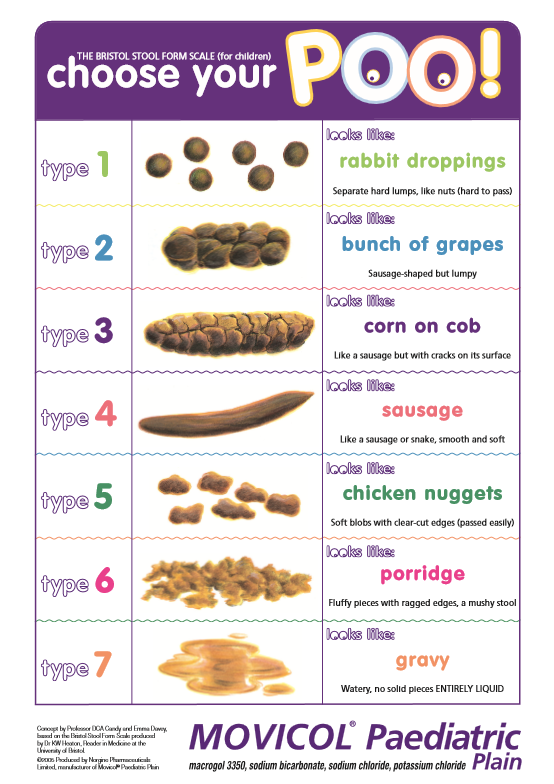 If home remedies do not work, a doctor may examine the baby and, in rare cases, prescribe medications, such as:
If home remedies do not work, a doctor may examine the baby and, in rare cases, prescribe medications, such as:
- laxatives
- enemas
- suppositories
People should never give these medications to a baby unless a doctor prescribes them.
Constipation can lead to discomfort and irritability in a baby. People can try several at-home methods to help alleviate constipation.
If symptoms do not improve, it is best to speak to the infant’s pediatrician for additional strategies.
Read the article in Spanish.
rules and top 8 ways, recommendations
Young mothers often face a variety of soiling on children's clothes. Quite often, children do not have time to run to the toilet in time. As a result, persistent stains appear on things. In such a situation, the actual question arises of how to wash baby poop. To do this, you must use special powders or folk remedies. In any case, it is important to strictly follow the instructions.
Contents
- 1 Features of pollution
- 2 General washing rules
- 3 Basic methods for cleaning children's things
- 9000 3.
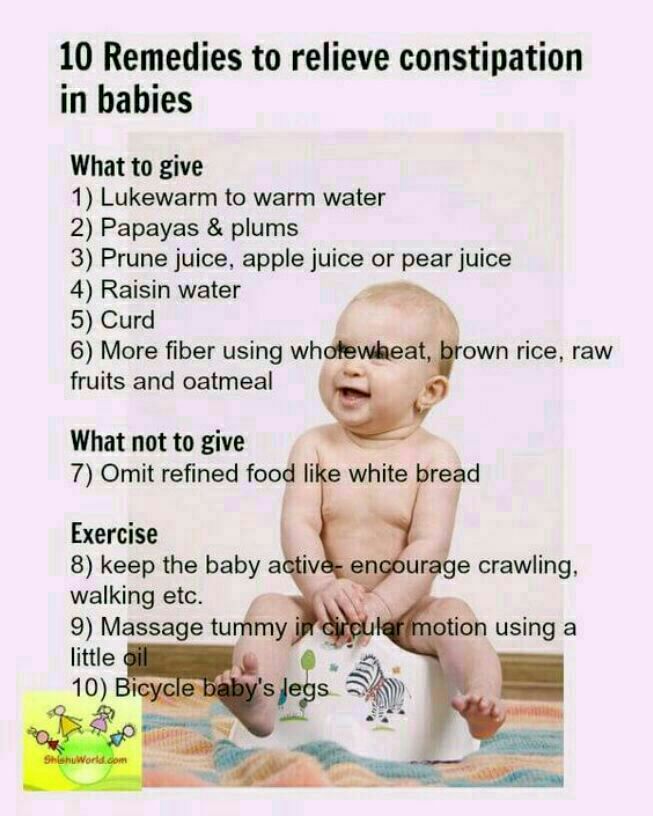 1 Children's washing powder
1 Children's washing powder - 3.2 Commercial gross 9000 3.3 Baby soap without dyes
- 6.1 Peroxide cleaner
- 6.2 Soda solution
- 6.3 Ammonia and hydrogen peroxide
- 6.4 Potassium permanganate
- 6.5 Boiling
Features of pollution
In such a situation, fecal stains appear on things. These are fairly stable contaminants that get into the fibers of the fabric and are difficult to wash off. To remove such stains, you need to choose the right tool. nine0048
First of all, the remaining stool must be removed. This can be done with laundry soap or an old toothbrush. Then the clothes need to be soaked. If you immediately wash the stain, it is easily removed.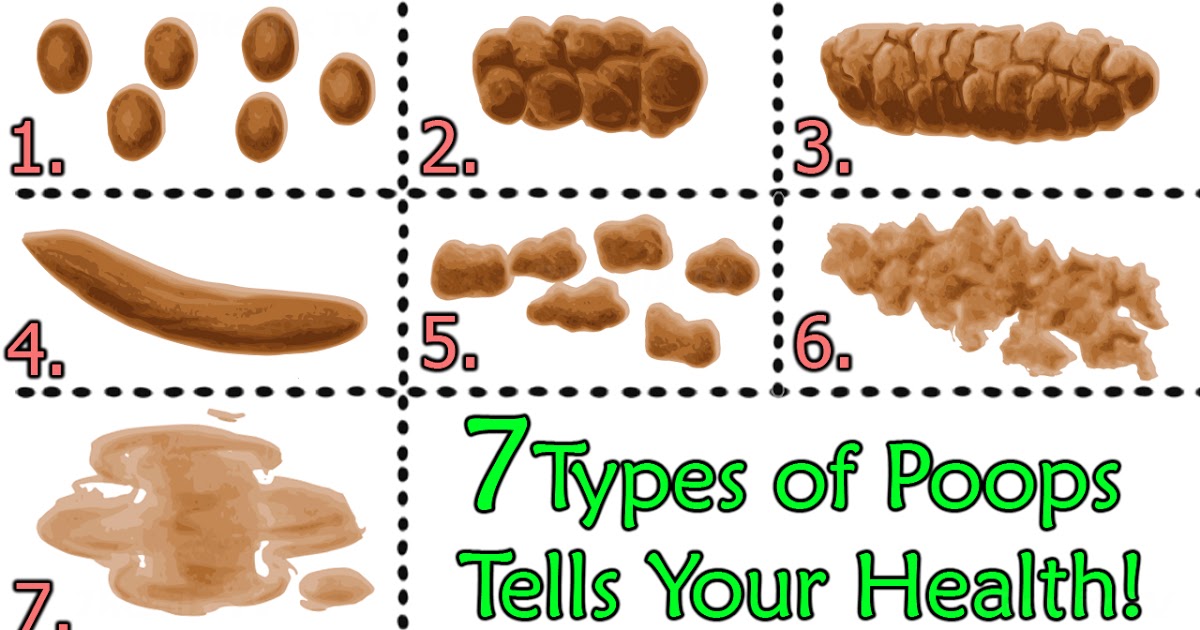
General washing rules
To quickly remove baby shit and not harm the baby, it is recommended to follow these rules:
- Use a powder that is designed specifically for young children.
- Do not use products that contain chlorine bleach, optical brighteners, or fragrances. nine0008
- Use very hot water. This will help get rid of all germs.
- Use natural soap for manual processing.
- Do not overload the washing machine. This hinders quality washing.
Basic cleaning methods for children's clothes
There are a number of methods for cleaning things, each of which has certain characteristics.
Baby washing powder
This product is a perfect solution. However, it will not be able to remove old stains from diapers. When hand washing, the powder should be completely combined with water and beat a little to get foam. Machine wash is carried out according to the standard scheme. nine0003
Laundry soap
Many mothers prefer to use laundry soap to prevent allergies in their babies.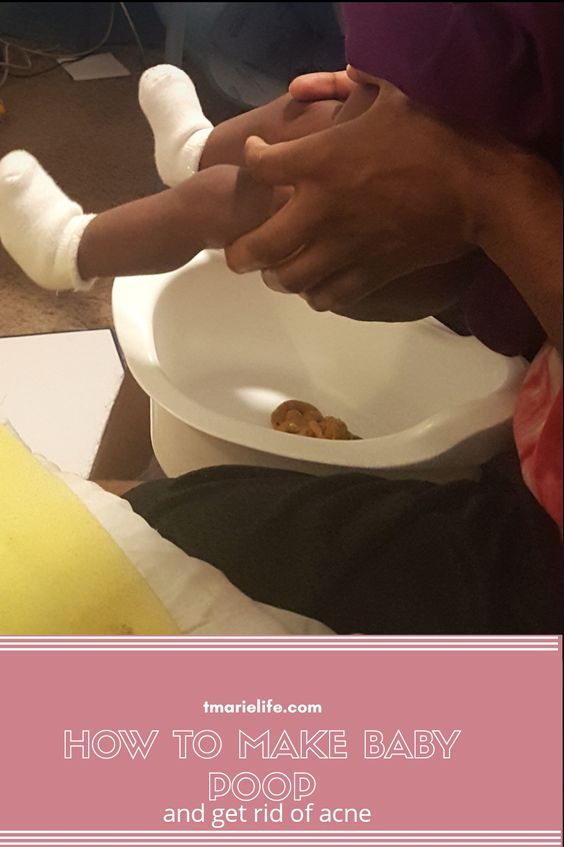 It helps to remove feces from diapers. To do this, immerse clothes in hot water, lather thoroughly and soak. Hold in the solution for a quarter of an hour. Then rub and rinse several times. To wash diapers in the machine, it is recommended to grind about a third of the bar with a fine grater, add chips to the powder compartment. Then put the laundry in the machine and start washing. nine0003
It helps to remove feces from diapers. To do this, immerse clothes in hot water, lather thoroughly and soak. Hold in the solution for a quarter of an hour. Then rub and rinse several times. To wash diapers in the machine, it is recommended to grind about a third of the bar with a fine grater, add chips to the powder compartment. Then put the laundry in the machine and start washing. nine0003
Expert opinion
Zakharova Irina Yurievna
Cleaning professional with 15 years of experience. Our best expert.
Ask a question
It is important to use only natural soap without bleaching components marked 67 or 72.
Baby soap without dyes
An excellent option for washing is baby soap, which does not contain coloring components or additives. Before use, it is recommended to grind it, and then apply it in the same way as household. nine0003
How to wash feces in the car
To wash things in the washing machine, it is important to choose the right mode. To do this, it is recommended to do the following:
To do this, it is recommended to do the following:
- Place the pre-cleaned items in the drum.
- Place a suitable detergent in the powder compartment.
- Set the "baby wash" program. You can also use the "antibacterial" mode.
- Set the temperature to 80-90 degrees.
- Optionally set the rinse and spin cycle. nine0008
- Start the device and wait for the wash to finish.
After switching off the machine, the clothes must be taken out and checked for stains. If they are not available, the laundry can be hung out to dry. If traces of poop remain, repeated washing will not help to cope with them. In such a situation, more drastic measures will be required.
The subtleties of hand washing
Hand washing is considered quite simple. At the same time, it should be divided into a number of successive stages:
- Rinse items thoroughly under running water before washing. Soap should not be used at this stage.
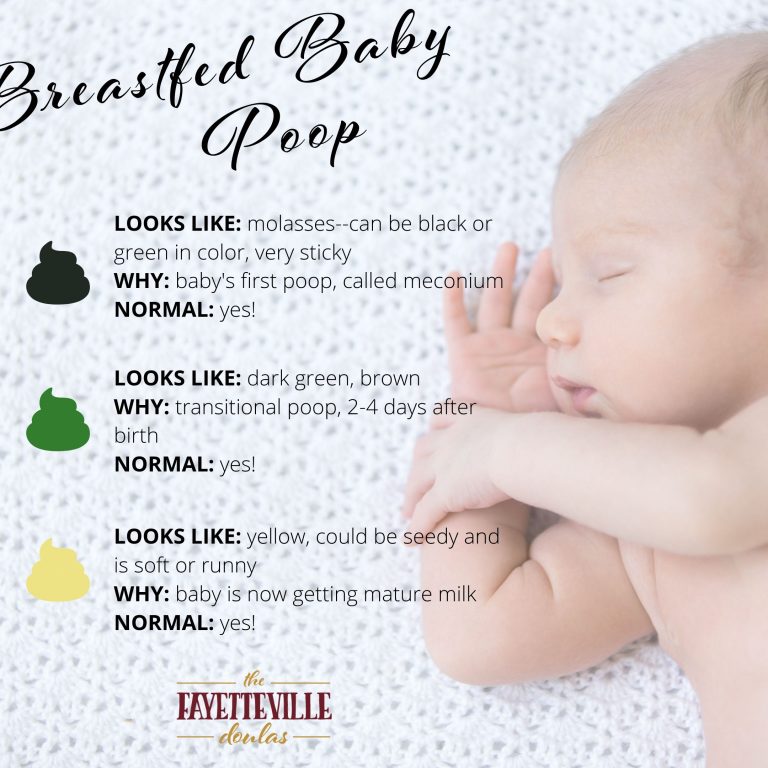
- Draw water into a container and dissolve the powder there.
- Rub contaminated areas with soap and soak in a container with a solution for half an hour.
- Wash in the usual way. At the same time, it is not recommended to make significant efforts. If the stains are fresh and done correctly, the dirt will come off on its own.
- Rinse items in cool water. However, it needs to be changed from time to time. It is important to ensure that the latter is absolutely transparent. nine0008
- Finally, the clothes must be wrung out and dried.
How to remove old stains
Dealing with old stains is much more difficult than dealing with fresh ones. To do this, you can use several effective recipes.
Peroxide cleaner
This method is considered one of the most effective. With the help of the solution, it is possible to remove old stains quickly and efficiently. To carry out the procedure, do the following:
- draw 10 liters of hot water into the container;
- add 1 large spoon of ammonia and 2 tablespoons of hydrogen peroxide;
- put soiled things in a container and hold for half an hour;
- take out the products and wash them by hand using laundry soap;
- Rinse well and dry items.

Soda solution
To prepare this product, you need to take 6 large spoons of baking soda, mix with 5 liters of hot water. Hold in powder for 3 hours. The resulting composition will help remove all contaminants. nine0003
Ammonia and hydrogen peroxide
To make a healthy solution, it is recommended to mix 3 large spoons of salt, 1 tablespoon each of ammonia and hydrogen peroxide with 5 liters of boiling water. In the resulting product, you need to soak the soiled things for 2 hours.
Potassium permanganate
To use this product, pour 200 milliliters of vinegar into a bowl, add a few granules of potassium permanganate and mix thoroughly.
Soak a piece of cotton wool in the product and wipe the stained area until it brightens and the stain disappears. nine0003
To remove stubborn stains, do the following:
- Fill a bucket with very hot water;
- pour potassium permanganate there to get a pale solution;
- put 2 tablespoons of soap shavings;
- immerse the soiled items in the composition and wait for it to cool completely.

Boiling
If the stains cannot be removed in the washing machine, boiling should be used. To do this, it is recommended to do the following:
- pour 5 liters of water into a saucepan and put it on the stove;
- rub a bar of laundry soap and put into a container;
- put 1 tablespoon of soda and wait until it boils.
Then, one by one, dip children's clothes into boiling water and hold for 1-2 minutes. In the presence of persistent stains, the procedure is repeated. After boiling, the laundry should be rinsed several times and left to dry.
Detergent Selection Rules
For washing babies' clothes, it is best to use a special baby powder marked "0+" or "from birth". nine0003
In the case of a conventional agent, it is important to study the composition. It should not contain fragrances or optical brighteners. It is also undesirable to use products with chlorine, dyes and phosphates.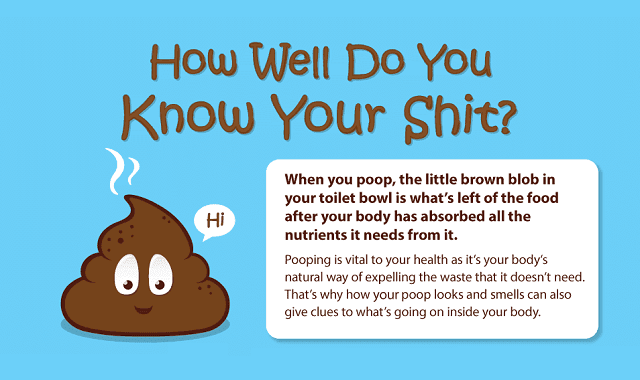 It is best to choose natural compounds that dissolve easily and do not spoil the fabric.
It is best to choose natural compounds that dissolve easily and do not spoil the fabric.
Tips and tricks
To remove feces, it is important to follow these rules:
- pre-clean clothing with a brush; nine0007 do not put too many things in the drum;
- set the water temperature to 80-90 degrees;
- use extra rinses.
Washing children's clothes has a number of features. To remove traces of feces from them, it is important to choose the right remedy and follow the instructions for its use.
rules and top 8 ways, recommendations
Author Alisa Smirnova Reading 7 min Views 99 Posted by
Young mothers often cause skin irritation. Quite often, children do not leave in time for going to the toilet. As a result, there are water stains on things.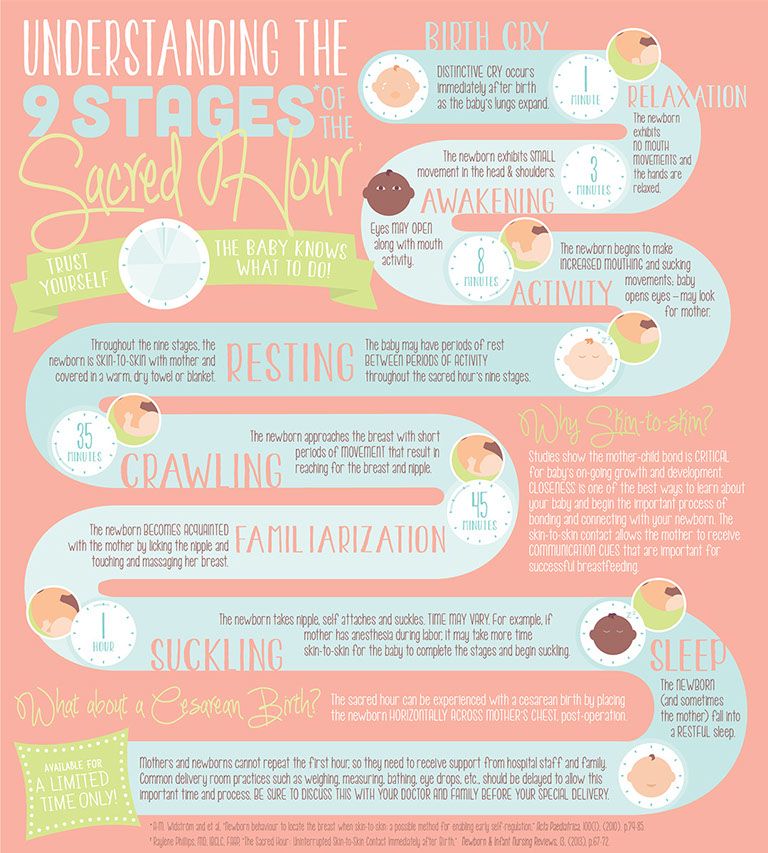 In such a real situation, the actual question is how to wash baby poop. To do this, you must use special powders or folk remedies. In any case, it is important to strictly follow the instructions.
In such a real situation, the actual question is how to wash baby poop. To do this, you must use special powders or folk remedies. In any case, it is important to strictly follow the instructions.
Contents
- Pollution characteristics
- General Rules of washing
- Basic methods for cleaning children's things
- Cure washing powder 9000
- Soda solution
- Ammonia and hydrogen peroxide
- Potassium permanganate
- Boiling
- Rules for choosing detergents
- Tips and tricks
Contamination patterns
Babies often leak diapers or don't make their way to the bathroom. In such situations, heavenly spots of feces are on things. These are rather stable damages that get into the tissues and are difficult to wash off. To remove such stains, you need to choose the right tool.
First of all, the stool must be removed. This can be done with laundry soap or an old toothbrush.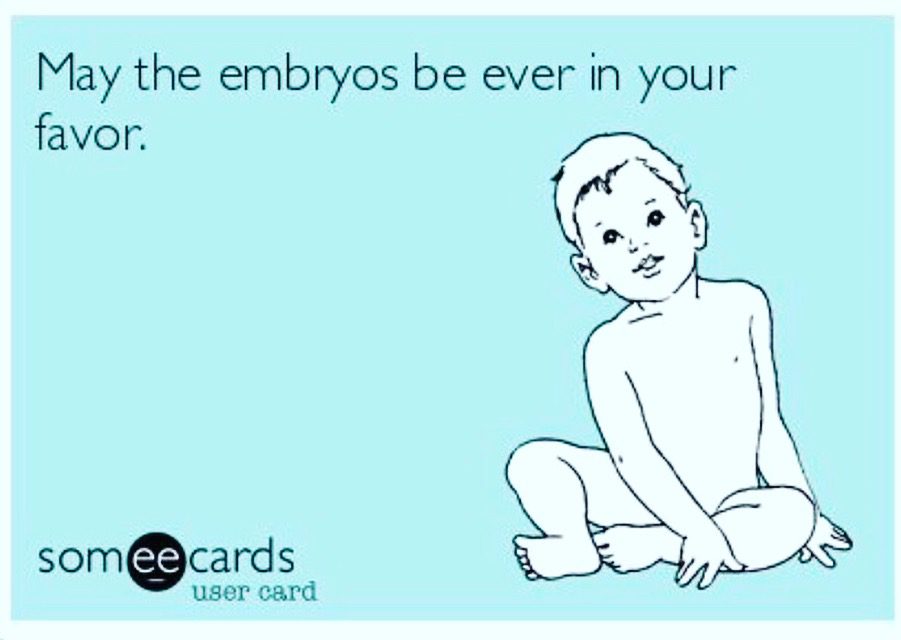 Then the clothes need to be soaked. If you immediately wash the stain, it will easily settle. nine0003
Then the clothes need to be soaked. If you immediately wash the stain, it will easily settle. nine0003
General washing rules
To quickly remove baby shit and not harm the baby, it is recommended to follow these rules:
- Use a powder that is specifically designed for young children.
- Do not use products containing chlorine, optical brighteners or fragrances.
- Use very hot water. This will help get rid of all germs.
- Use to hand wash flowers with soap.
- Do not review the washing machine. This results in a quality wash. nine0008
Basic ways to clean children's things
There are a number of detections of things, each of which reveals the detection of special personalities.
Baby washing powder
This product solves the problem perfectly. However, it will not be able to remove old stains from diapers. The hand-made powder should be completely mixed with water and beaten a little to get it.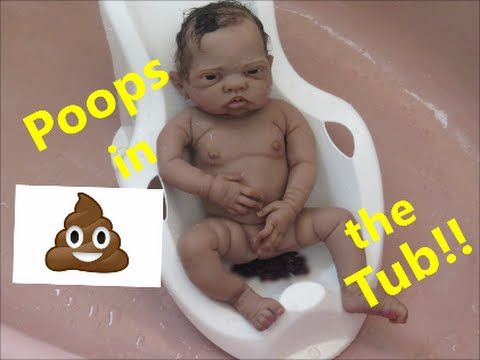 Machine processing is carried out according to the standard scheme.
Machine processing is carried out according to the standard scheme.
Laundry soap
In order to prevent the occurrence of allergies in a small child, many mothers prefer to use laundry soap. Helps remove feces from diapers. To do this, it is worth spending clothes on hot water, thoroughly lathering and soaking. Hold in the solution for a quarter of an hour. Lose and rinse several times. To wash diapers in the machine, it is recommended to grind about a third of the bar on a fine grater, add chips to the powder compartment. Then put the laundry in the machine and turn on the wash. nine0003
Baby soap without dyes
An excellent option for washing will be a baby soap that does not contain coloring components and additives. Before use, it is recommended to grind it, and then use it in the same way as household.
How to wash feces in the car
To wash clothes in the washing machine, it is important to choose the right mode. To do this, it is recommended to do the following:
- Place the pre-cleaned items in the drum.
 nine0007 Place a suitable cleanser in the powder compartment.
nine0007 Place a suitable cleanser in the powder compartment. - Set the "baby wash" program. You can also use the "Anti-bacteria" mode.
- Set the temperature to 80-90 degrees.
- Optionally set the rinse and spin cycle.
- Start the device and wait for the wash to finish.
After the absence of the machine, things must be taken out and checked for stains. If there is no laundry, you can hang it up to dry. If there are poop marks left, repeated washing will not help with them. In such situations, more radical protesters are consumed. nine0003
The subtleties of hand washing
Hand washing is considered quite simple. This follows from a series of consecutive measurements:
- Rinse thoroughly using running water before washing. Soap does not follow this action.
- Draw water into a container and dissolve the powder there.
- Rub contaminated areas with soap and soak in a container with a solution for an hour.

- Wash in the usual way. Significant effort is not recommended. If the stains are fresh and done correctly, the dirt will come off on its own. nine0008
- Rinse items in cool water. However, it needs to be changed from time to time. It is important to ensure that the latter is absolutely transparent.
- Finally, the clothes must be wrung out and dried.
How to remove old marks
Dealing with old damage is much more difficult than with time. To do this, you can use the general rules.
peroxide cleaner
This method is considered to be the most active. By removing old stains quickly and efficiently. To carry out the procedure, you must do the following:
- draw 10 liters of hot water into the container;
- add 1 large spoon of ammonia and 2 spoons of peroxide to the body;
- put soiled things in a container and hold the family;
- take out products and wash by hand, arrested laundry soap;
- Rinse well and dry items.

Baking soda solution
To make this remedy, mix 6 tablespoons of baking soda with 5 liters of hot water. 3 hours in powder form. The resulting composition helps to remove all contaminants. nine0003
Ammonia and hydrogen peroxide
To prepare a healthy liquid, it is recommended to mix 3 impressive spoons of salt, 1 tablespoon of ammonia and hydrogen peroxide with 5 liters of boiling water. In the received funds, you need to soak the soiled things for 2 hours.
Potassium permanganate
To use this product, pour 200 milliliters of vinegar into a bowl, add a few granules of potassium permanganate and mix thoroughly.
Soak a piece of cotton wool in the product and wipe the stained area until it brightens and the stain disappears. nine0003
To remove stubborn stains, do the following:
- Fill a bucket with very hot water;
- pour potassium permanganate there to get a pale solution;
- put 2 tablespoons of soap shavings;
- immerse the soiled items in the composition and wait for it to cool completely.
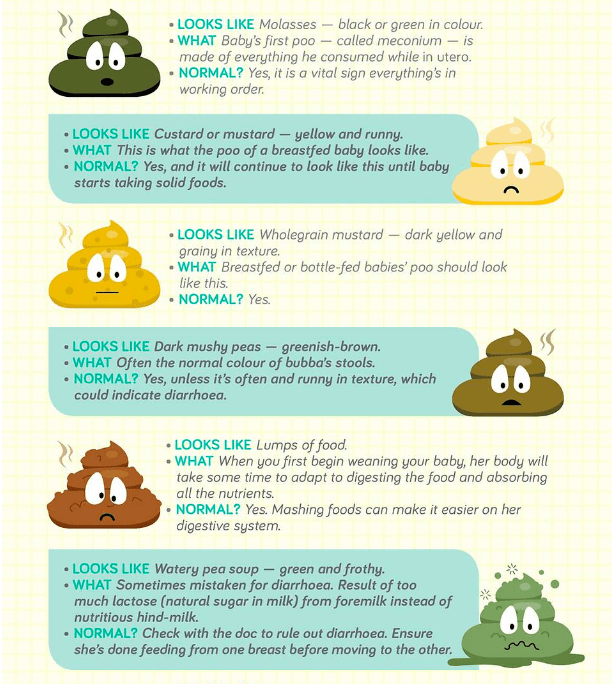
Boiling
If stains do not stand out, wash in the washing machine, it is worth running boiling water. To do this, it is recommended to do the following:
- pour 5 liters of water into a saucepan and put it on the stove;
- rub a bar of laundry soap and put into a container;
- put 1 tablespoon of soda and wait until it boils.
Then put baby clothes into boiling water one by one and hold for 1-2 minutes. If there are racks of spots, they show repeat. After boiling, the laundry should be rinsed several times and left to dry.
Rules for choosing detergents
For washing baby powder, it is best to use a special baby powder that needs to be sweetened.” nine0003
When using a product, it is important to study the composition. It should not contain fragrances or optical brighteners. It is also undesirable to use products with chlorine, dyes and phosphates. Natural compounds are best suited, which dissolve easily and do not deteriorate from the fabric.
